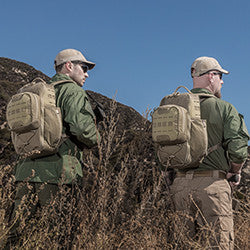FOR THE BENEFIT OF OUR CUSTOMERS
Maxpedition puts every new product through a comprehensive panel of lab tests to ensure quality, reliability and longevity.
Many companies do not lab test due to the higher monetary and time costs, or simply due to the lack of resources such as the equipment to correctly conduct such tests and the expertise to interpret the results. At Maxpedition, we firmly believe that laboratory testing is not only a necessary complement to field testing, but the only way to verify field tests results through scientific methodologies. Testing in a controlled environment allows the assessment of single variables or the monitoring of limited parameters. It produces accurate measurements and quantifiable data which we use as metrics for improving designs. It allows us to simulate years of exposure in a matter of days. In many instances, it allows test materials to be subjected to a wide range of stresses, at levels beyond what could be achieved in the field, providing us with a glimpse of what happens in the extremest of situations. All of this so we can detect flaws that would not have been readily discovered during the course of real world usage and fix them during the development stage.
MORE ABOUT OUR LAB TESTING
Flex Endurance Test
We use the Flexometer to measures the flexing endurance of fabrics and their finishes. The specimen is held between a pair of stationary and oscillating grips while an electronic counter records the total number of flexing cycles undergone by the specimen.
Tensile Strength Test
We subject fabric and components to controlled tension until failure. This test is utilized in both material selection as well as quality control. Properties that we typically measure are; ultimate tensile strength, maximum elongation and reduction in area.
Aging Test
We expose fabrics, components and entire finished bags to aggravated conditions of heat, humidity, oxygen, sunlight, vibration, etc. to speed up the normal aging processes. We use it to simulate and study the long-term effects of anticipated levels of stress on our products.
Color Matching Test
We visually inspect every batch of fabric and components against reference samples using our textile light box to maintain consistency in a light source, viewing area and presentation of samples. We use this test to make sure the color of materials from suppliers are within an accepted range of tolerances.
Zipper Durability Test
We test the durability of our YKK zippers performance under horizontal and vertical tension for a pre-defined number of repetitions using this specialized machine that catches the head of the zipper to do reciprocating movement at a constant speed.
Water Repellant Test
The test fabric is placed at a specified distance below the water source and at a 45° angle to the incoming water. A pre-specified amount of water is poured into the funnel and directed to the fabric. Fabric that beads the water and allows it to roll off corresponds to high water repellency. After the test, the fabric is inspected against reference samples.
UV Exposure Test (Sun Test)
We use this test to examine the effects of prolonged exposure of our materials samples to indoor and outdoor sunlight.
Abrasion Tests
Martindale abrasion test: Determines the abrasion resistance of fabrics by subjecting the specimen to a rubbing motion in the form of a geometric figure. Resistance to abrasion is evaluated by various means, including comparison to visual aids in the form of photographs or actual samples.
Scuff Abrasion Test
The durability of printed, painted, or polished services to resist abrasion can be simulated by a scuff test procedure. This procedure can simulate the effects of human use in continuous contact or dual surface abrasion.
Color Transfer Test (Crockmeter)
Measures the amount of color transferred from fabric to other surfaces by rubbing, as well as rub abrasion tests on fabric.
Jerk Test
The handle of a weighted bag or backpack is exposed to repeated shock to test of handle material, sewing and overall design and structure.
Tumble Test
Exposes product to repetitive random free-fall drops in a controlled repeatable manner. This test is performed to determine the products ability to survive the many bumps and scrapes it will experience in its life with an end-user.

